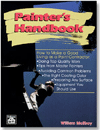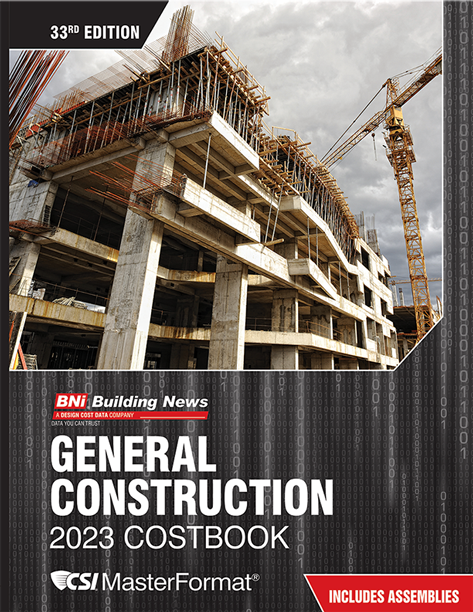An occasional problem encountered after finishing gypsum board, particularly when installed over lumber that has not been allowed to stabilize, and/or in the winter months when the temperature and humidity rise and fall repeatedly, is "joint ridging" or "beading." Joint ridging appears as a uniform line or bead (hence the term "beading") that runs along the joint where the edges of two gypsum board panels meet. One cause of the ridge or bead is excessive compression on the edges of the two panels, forcing the edges to swell out. Another cause is the result of butting a tapered edge up to a squared edge without sufficient joint treatment. Yet another cause is misaligned framing behind the joint, either due to improper installation of the framing or twisting of the wood, due to temperature and humidity fluctuations, which forces the edges of the two boards to move out of alignment.
Repairing this condition is usually a relatively simple procedure. First, the building must be allowed to stabilize, meaning that the expanding and contracting of the building materials as they release or absorb moisture must run its course. This process generally requires one complete temperature cycle, depending upon the location of the building.
Stability
Once the building is stable, ridged joints should be sanded down closer to the plane of the wall or ceiling surface. One should use care not to sand too deeply and damage the embedded joint reinforcing tape. After the ridge is sanded down, any voids in the joint should be filled with either topping compound or all-purpose joint compound, spreading and feathering the compound out wide enough so that the surface appears flat. Allow the compound to dry at least 24 hours, and then sand it to smooth out the surface and remove any tool marks. If necessary, add additional layers of compound, allowing each coat 24 hours to dry before sanding.Joint ridging is most often noticed, and corrected, after the surface has been prime or finish painted. Occasionally, a walk-through of a job site will reveal painted walls, and sometimes ceilings, that have stripes of freshly applied joint compound marking a few gypsum board joints. Obviously, such joints will need to be repainted to match the existing paint. But before the repaired joint can be painted or otherwise decorated, it should be primed with a primer appropriate for the desired decoration. In some instances, this will be a high quality latex drywall primer, but one should never assume that the final decoration will be compatible with just any primer-always read the labels before applying a primer and a finish.
This takes us to the larger topic of painting new gypsum board and painting repaired gypsum board areas. There are several grades of interior paint offered by most paint manufacturers, usually at least a "good," "better" and "best line," and frequently a "not-so-good" and a premium line, as well. Each manufacturer will have specific recommendations for each of these lines of paint, including preparation, priming, application and touch-up. Often, a finish paint is sold as self-priming, meaning that multiple coats of the same material are intended to be used over the substrate to achieve the desired look. Sometimes such a paint may be used with a primer, and sometimes it is best not to.
Before painting or decorating a gypsum board surface, it must be finished to the appropriate level, as described in either Gypsum Association publication "GA-214, Recommended Levels of Gypsum Board Finish," or in ASTM C 840, "Standard Specification for Application and Finishing of Gypsum Board." For most interior paint finishes, either a Level 4 or 5 gypsum board finish is appropriate. Level 4 requires that all joints are first taped by embedding joint tape in a layer of joint compound and then are given another two layers of joint compound, and that all fastener heads and accessories are given three separate coats of joint compound. Level 5 requires that a skim coat of joint compound or a material manufactured to specifically function as a skim coat be applied to the entire gypsum board surface once Level 4 has been achieved.
Level 4 gypsum board finish is appropriate for truly flat paints. Most "builder grade" paints fit this category and are often designed to be self-priming. These "no sheen" paints typically use coarsely ground pigments that impart texture to the paint film. This texture facilitates easy touch-up and masks minor surface irregularities that are more apparent under severe lighting conditions when paint with a higher sheen is used.
Level 5 gypsum board finish is recommended for any surface that will be decorated with a paint that exhibits a sheen or gloss, or with a non-textured flat paint. Most premium quality flat paints exhibit some angular sheen and are considered non-textured. These premium flat paints typically use more finely ground pigments that impart no significant texture to the paint film. A Level 5 finish is required for these paints, because the skim coat provides the necessary porosity and profile to the surface for it to appear uniform in texture and color once painted with a paint that has any degree of sheen. Level 5 should also be used in areas with severe lighting conditions that are likely to highlight any surface irregularity, regardless of the paint used.
In other words, if a gypsum board surface is finished to Level 4-that is taped joints and compound on the fasteners and accessories but no skim coat-and a paint with an angular sheen (i.e., a non-textured flat paint) is applied, the paper areas with no joint compound over them may have a different texture than those areas covered with joint compound. If a non-textured flat paint is applied, the color on the areas covered with joint compound may appear different (lighter from one direction, darker from the other) than the non-covered areas. This is because light is reflected differently by the areas that are covered with compound, as opposed to those that are not.
Complicated process
This whole process becomes slightly more complicated when the repair of a gypsum board surface occurs after the paint has been applied. In the best of all possible worlds, the original paint is a couple of coats of the self-priming flat that is commonly used in new home construction. If the original batch of paint is available, a couple of coats of this paint applied directly over the repaired joint may enable the repair to just fade into the wall once dry. If a different batch is used, it may be necessary to recoat the entire surface to achieve a uniform appearance.In the instance when self-priming paint was used exclusively, applying a high-solids premium latex primer over the repaired area and then attempting to touch-up with builder grade paint may prove to be counter-productive. Because the resin solids in the paint are "held out" by the primer and are not absorbed by the primed surface at the same rate as the adjacent painted wall, the surrounding non-repaired and painted surface is more absorbent than the primed/patched area. This may cause a coat of paint over the primed surface to appear slightly lighter in color than the surrounding non-repaired area. Additional resin solids at the surface of the paint film can also raise the sheen just enough to make the repair visible.
The use of most high quality or premium paints will likely necessitate repainting the entire surface after a joint repair. Successful touch-up is improbable because the areas where the primer and the touch-up paint overlap the existing paint will have twice the film thickness of the patched area. This often looks like a halo around the repair, due to both a sheen and a profile difference. Usually, the patched area can be primed with the compatible primer and then the whole surface recoated with the finish paint; however, if the size of the project is considerable, it is best to do a test of the whole system first to ensure that the desired result is achieved on the first attempt. Otherwise, it may be necessary to sand and prime the entire surface before repainting to achieve an even appearance.
Proper repair of gypsum board surfaces requires a bit of a deft touch and an understanding of exactly how paints and primers are impacted by light and the surface to which they are applied. One's best effort at correctly patching a damaged gypsum board surface can be undone by the unwillingness of a paint applicator to patiently and correctly apply the required type of paint.




Report Abusive Comment